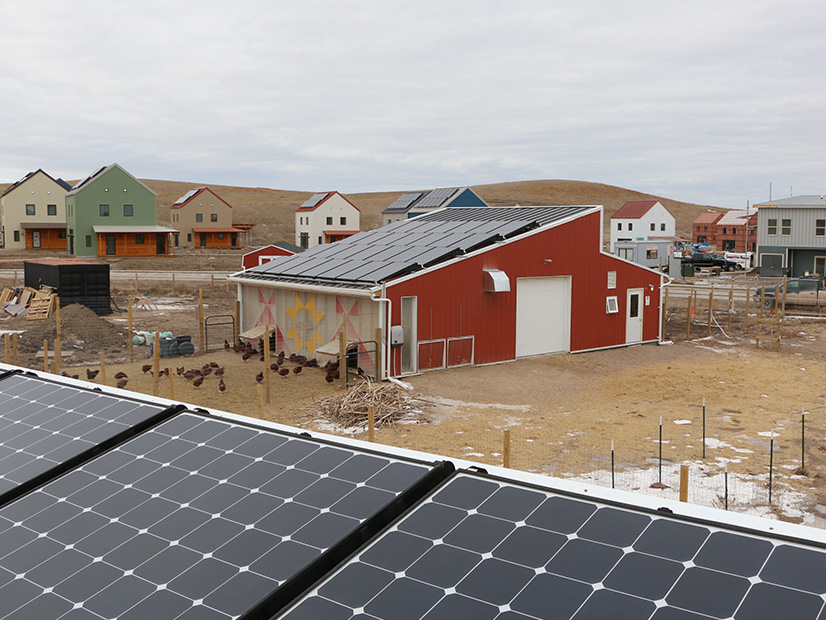
The Department of Energy launched its new Communities Local Energy Action Program (LEAP) on Wednesday with a roundtable focused on the kinds of community-led clean energy projects the $16 million initiative will seek to foster through a range of technical assistance options.
“Too often, low-income communities and communities of color don’t see the benefits of clean energy in their neighborhoods; too often, clean energy projects skip over the communities that need them the most,” Energy Secretary Jennifer Granholm said in her opening comments. She said the program will work with up to 36 communities, helping each “to develop a locally driven clean energy action plan; so, after 12 to 18 months, each community will then be prepared to work with DOE long term and to leverage more resources from the federal government and from philanthropy and from the private sector.”
The program is targeted at “communities that are experiencing environmental injustice or climate impacts or economic stress from the shift away from fossil fuels,” Granholm said. “Communities also have to be experiencing high energy costs and have 30% or more of residents that are low income to be eligible for this.”
Wednesday’s rollout begins a four-week comment period ending Oct. 12, according to a release from DOE. Applications are due Dec. 17, with the announcement of program participants expected in March 2022.
While not providing direct funding, Granholm described the program as a “down payment for the investments we will continue to make” in environmental justice, low-income and fossil-fuel communities.
As defined in the program announcement, technical assistance will include “expertise and resources” provided by DOE. For example, the department could provide a community “with an analysis of clean energy planning and development opportunities based on current infrastructure, workforce availability, energy resource potential [and] utility regulatory structure.”
Projects eligible for the program include renewable energy planning and development, microgrids for community resilience, building energy efficiency and electrification, clean transportation, and carbon capture and storage.
Communities ‘in the Driver’s Seat’
Community development and environmental experts and advocates speaking at the roundtable emphasized the importance of community-based project development.
“What’s exciting about the premise [of LEAP] is a realization that the people in these communities and the communities themselves are not the problem,” said Michael Tubbs, former mayor of Stockton, Calif., and now an adviser to Gov. Gavin Newsom. “They are actually the solution. When you speak about listening to and putting the community in the driver’s seat, it’s just a realization that there is the asset and solution.”
Roundtable participants said the program is a good first step, but some adjustments could be needed.
Stephanie Tyree, executive director of the West Virginia Community Development Hub, said drawing investment to coalfield communities in her state is difficult. But, she said in a phone interview with NetZero Insider, “no projects can be successfully implemented without a very well thought-out plan and without technical expertise to make the projects work.” LEAP will “give us access to technical expertise that we don’t normally have a direct pipeline to, or we don’t have the resources to pay for.”
She would like to see the program open to regional clusters of communities, rather than individual cities or towns, and the “anchor organizations” they work with, as described in the official announcement.
“I really hope that the DOE will consider allowing projects from anchor institutions that are bringing together multiple rural communities, working together with a regional strategy,” she said, noting that her organization often works with communities of 2,000 to 15,000 people.
“We find in rural places, regional strategies and partnerships work best for capacity building and for really driving the types of projects that are transformational for our communities,” Tyree said. “We think about it as not necessarily bounded by a census tract [or] geography; it’s really the sense of community that’s defined by the people.”
Tatewin Means, executive director of the Thunder Valley Community Development Corp., said her organization could use investment and policy support for its “regenerative community” of energy-efficient, solar-powered homes on the Pine Ridge Reservation in South Dakota.
“We face significant barriers here at the state level when it comes to incentivizing clean energy and moving more communities in that direction,” Means said. “There’s just no real incentive for energy distributors and producers to shift their practices. Having outside support and encouragement [for] a positive policy shift would be most helpful, especially to states like South Dakota that aren’t as progressive or as far along in our fight against climate change.”


